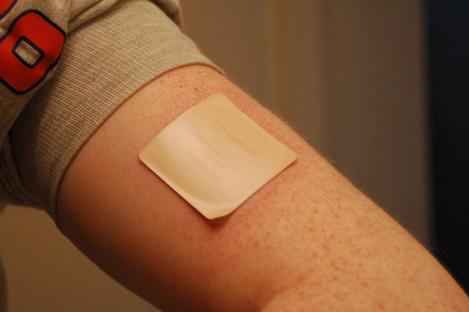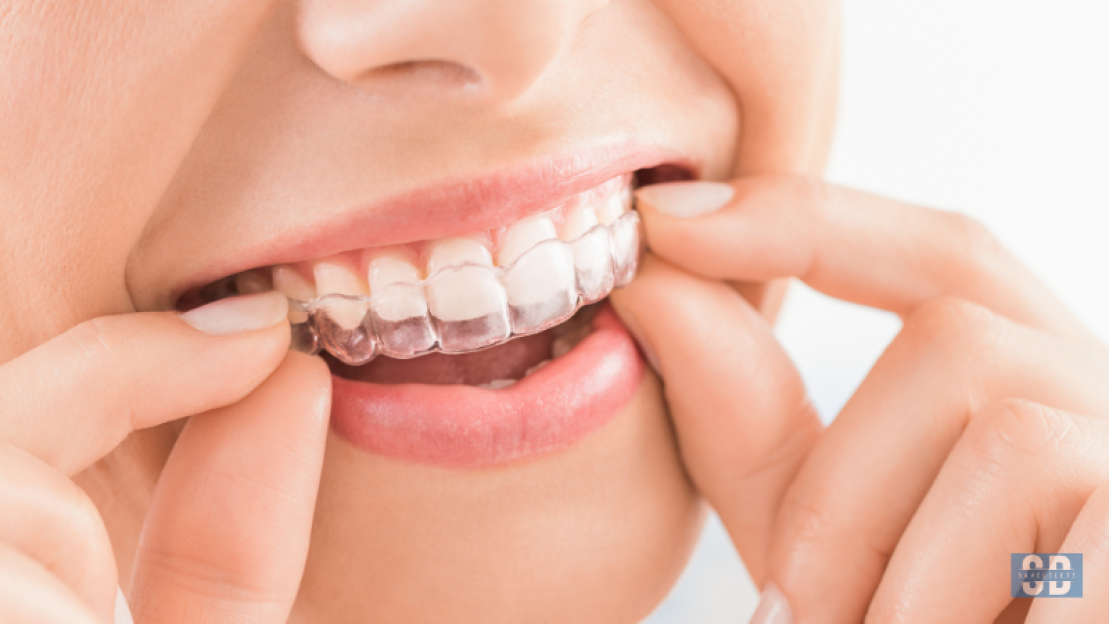That nagging ache in your lower back after a long day at the office. The sharp twinge in your shoulder that won’t let you sleep.
The persistent knee pain that makes every step a reminder of discomfort. If you’ve ever found yourself reaching for that heating pad at 2 AM or desperately searching for relief that doesn’t involve swallowing another pill, you’re not alone.
Millions of Americans are discovering what many consider the game-changer in pain management: pain relief patches that work while you live your life.
Understanding Pain Relief Patches: Your Gateway to Comfort
Pain relief patches have revolutionized how we approach pain management in America. These innovative medical devices deliver targeted relief directly to the source of discomfort, offering a hands-free solution that fits seamlessly into busy lifestyles.
Unlike traditional pain medications that affect your entire system, topical pain patches provide localized treatment. They work by delivering active ingredients through your skin directly to painful areas, offering sustained relief for hours at a time.
How Pain Relief Patches Work
Pain patches use transdermal technology to penetrate skin layers and reach underlying tissues. The active ingredients are released slowly over time, providing consistent pain relief without the peaks and valleys associated with oral medications.
Most patches contain one or more of these proven ingredients:
- Menthol: Creates cooling sensations that override pain signals
- Capsaicin: Derived from chili peppers, depletes pain-transmitting substances
- Lidocaine: A topical anesthetic that numbs painful areas
- Diclofenac: A non-steroidal anti-inflammatory drug (NSAID) that reduces inflammation
- Methyl salicylate: Similar to aspirin, provides anti-inflammatory effects
The Science Behind Effective Pain Management Patches
Recent clinical studies have shown that transdermal pain relief can be as effective as oral medications for certain types of pain, particularly musculoskeletal conditions. The targeted delivery system means fewer systemic side effects while maintaining therapeutic benefits.
Research published in the Journal of Pain Research indicates that topical pain relief patches show significant efficacy in treating:
- Lower back pain
- Arthritis discomfort
- Muscle strains and sprains
- Post-exercise soreness
- Chronic joint pain
Top-Rated Pain Relief Patches Available in the US
1. Aspercreme Lidocaine Patches
Best for: Localized pain relief and numbing
Aspercreme’s lidocaine patches contain 4% lidocaine, the maximum strength available over-the-counter. These FDA-approved patches provide up to 8 hours of numbing relief, making them ideal for acute pain situations.
Key Features:
- Maximum strength lidocaine formula
- Waterproof design for active lifestyles
- Easy-peel application
- Suitable for back, neck, and joint pain
Price Range: $12-18 for 5 patches User Rating: 4.3/5 stars
2. Salonpas Pain Relief Patches
Best for: Muscle and joint pain
Salonpas patches combine methyl salicylate and menthol for dual-action pain relief. These Japanese-engineered patches have been trusted worldwide for over a century.
Key Features:
- Dual-action cooling and warming effects
- Flexible fabric that moves with your body
- Up to 8-12 hours of relief
- Available in multiple sizes
Price Range: $8-15 for 6 patches User Rating: 4.1/5 stars
3. Bengay Ultra Strength Patches
Best for: Deep muscle pain
Bengay’s ultra-strength formula provides penetrating relief for deep muscle aches. The patches contain a powerful combination of menthol and methyl salicylate.
Key Features:
- Extra-strong formula for severe pain
- Large size covers more area
- Stays in place during movement
- Pleasant cooling sensation
Price Range: $10-16 for 4 patches User Rating: 4.0/5 stars
4. Icy Hot Medicated Patches
Best for: Targeted muscle relief
Icy Hot patches deliver the brand’s signature hot-cold therapy in a convenient patch form. They’re particularly effective for sports-related injuries and muscle fatigue.
Key Features:
- Dual hot-cold therapy
- Flexible design for joint application
- 8-hour wear time
- Non-greasy application
Price Range: $7-12 for 5 patches User Rating: 3.9/5 stars
5. Absorbine Jr. Pro Patches
Best for: All-day comfort
These professional-grade patches offer extended relief with a unique time-release formula. They’re designed for people who need long-lasting pain management.
Key Features:
- 12-hour extended release
- Professional-strength formula
- Breathable material
- Suitable for sensitive skin
Price Range: $15-22 for 4 patches User Rating: 4.2/5 stars
Prescription-Strength Options
Flector Patches (Diclofenac Epolamine)
For severe pain conditions, doctors may prescribe Flector patches. These contain diclofenac, a powerful NSAID that provides prescription-strength relief for conditions like acute injuries or chronic pain syndromes.
Important Note: Prescription patches require medical supervision and should only be used under healthcare provider guidance.
Choosing the Right Pain Patch for Your Needs
Consider Your Pain Type
Acute Pain (recent injuries, post-workout soreness):
- Lidocaine patches for numbing relief
- Menthol-based patches for cooling comfort
- Short-term use (1-3 days)
Chronic Pain (arthritis, long-term conditions):
- Multi-ingredient patches for sustained relief
- Extended-wear options (8-12 hours)
- Regular use as part of pain management plan
Muscle Pain (strains, tension):
- Heat-generating patches
- Combination hot-cold therapy
- Large-coverage patches
Skin Sensitivity Considerations
If you have sensitive skin, look for:
- Hypoallergenic formulations
- Gentle adhesives
- Natural ingredient options
- Patch-test recommendations
Lifestyle Factors
Active Lifestyle: Choose waterproof, flexible patches that stay put during exercise Work Environment: Opt for discreet, low-profile patches that won’t interfere with clothing Sleep Issues: Select overnight-wear patches designed for extended use
How to Use Pain Relief Patches Effectively
Application Best Practices
- Clean the Area: Wash and dry the painful area thoroughly
- Remove Hair: Trim excessive hair for better adhesion
- Apply Carefully: Remove backing and press firmly for 10-15 seconds
- Position Properly: Center the patch over the most painful area
- Check Fit: Ensure edges are secure and no air bubbles exist
Safety Guidelines
Do Not:
- Apply to broken or irritated skin
- Use heating pads over patches
- Cut patches to resize them
- Apply multiple patches to the same area
- Exceed recommended wear time
Do:
- Rotate application sites to prevent skin irritation
- Remove patches before MRI procedures
- Store in cool, dry places
- Check expiration dates before use
Maximizing Effectiveness
Timing: Apply patches when pain levels are moderate rather than waiting for severe pain Positioning: Ensure the patch covers the entire painful area plus surrounding tissue Activity: Gentle movement can help distribute the medication more effectively Hydration: Stay well-hydrated to support optimal skin absorption
Pain Relief Patches vs. Other Treatment Options
Patches vs. Oral Medications
Advantages of Patches:
- Targeted relief without systemic effects
- No stomach irritation
- Steady medication levels
- No pills to remember
Advantages of Oral Medications:
- Faster onset for severe pain
- Suitable for widespread pain
- More dosing flexibility
- Lower cost per dose
Patches vs. Topical Creams
Patches Win For:
- Hands-free application
- Longer-lasting relief
- No mess or residue
- Controlled medication release
Creams Win For:
- Immediate application
- Easy to reapply
- Better for large areas
- More affordable options
Patches vs. Heat/Cold Therapy
Patches Provide:
- Chemical pain relief
- Convenience for daily activities
- Consistent temperature
- Medication benefits
Heat/Cold Therapy Offers:
- Immediate relief
- Reusable options
- No medication concerns
- Customizable intensity
Cost Analysis and Value Comparison
Price Per Day Breakdown
Budget Options ($1-2 per day):
- Generic menthol patches
- Store-brand alternatives
- Bulk purchase options
Mid-Range ($2-4 per day):
- Name-brand combination patches
- Specialty formulations
- Extended-wear options
Premium ($4-8 per day):
- Maximum-strength formulas
- Prescription alternatives
- Professional-grade patches
Insurance Coverage Considerations
Most insurance plans cover prescription pain patches when medically necessary. Over-the-counter patches are typically not covered but may be eligible for FSA/HSA reimbursement.
When to See a Healthcare Provider
Red Flag Symptoms
Seek immediate medical attention if you experience:
- Severe allergic reactions (difficulty breathing, widespread rash)
- Signs of infection at application site
- Worsening pain despite treatment
- New neurological symptoms
Chronic Pain Management
Consider consulting a healthcare provider if:
- Pain persists beyond 2-3 weeks
- You’re using patches daily for extended periods
- Pain significantly impacts daily activities
- Current treatments aren’t providing adequate relief
Natural and Alternative Pain Relief Patches
Herbal-Based Options
Arnica Patches: Natural anti-inflammatory properties Turmeric Patches: Contains curcumin for inflammation reduction Willow Bark Patches: Natural source of salicin (aspirin-like compound)
Essential Oil Patches
Peppermint: Natural menthol for cooling relief Eucalyptus: Anti-inflammatory and analgesic properties Wintergreen: Contains natural methyl salicylate
CBD-Infused Patches
Cannabidiol (CBD) patches are gaining popularity for:
- Non-psychoactive pain relief
- Anti-inflammatory effects
- Potential anxiety reduction
- Legal in most US states
Important: Research on CBD patches is still developing. Consult healthcare providers before use, especially if taking other medications.
Special Considerations for Different Demographics
Seniors (65+)
Benefits for Seniors:
- Reduced risk of drug interactions
- Lower fall risk compared to sedating medications
- Easy application for arthritis sufferers
- No kidney or liver concerns
Precautions:
- Thinner skin may be more sensitive
- Slower medication clearance
- Higher risk of skin reactions
- May need assistance with application
Athletes and Active Individuals
Performance Benefits:
- No impairment of coordination
- Immediate return to activity
- Targeted treatment of sports injuries
- No banned substances in most OTC patches
Athletic Considerations:
- Waterproof options for swimmers
- Flexible designs for full range of motion
- Discreet application under uniforms
- Quick-acting formulas for competition day
Pregnant and Nursing Women
General Recommendations:
- Consult healthcare providers before use
- Avoid patches with aspirin-like compounds
- Monitor for unusual skin reactions
- Use minimal amounts when approved
The Future of Pain Relief Patch Technology
Emerging Innovations
Smart Patches: IoT-enabled patches that monitor pain levels and adjust medication delivery Biodegradable Options: Environmentally friendly patches that dissolve safely Personalized Formulations: Custom patches based on genetic pain response profiles Extended-Release Technology: Patches providing 24-48 hour relief with single application
Research and Development
Current studies are exploring:
- Microneedle patch technology for deeper penetration
- Combination therapies in single patches
- Heat-activated delivery systems
- Biomarker-responsive patches
User Reviews and Real-World Experiences
Success Stories
Sarah, 45, Office Worker: “The lidocaine patches saved my career. I was ready to quit because of chronic neck pain from computer work. Now I can focus on my job instead of my pain.”;
Mike, 32, Construction Worker: “After trying everything for my back, these patches let me work without constantly thinking about pain. They stay put even when I’m sweating all day.”;
Elena, 67, Retiree: “My arthritis was keeping me from playing with my grandchildren. These patches give me the freedom to be active again without worrying about side effects.”;
Common User Feedback
Most Appreciated Features:
- Convenience of hands-free relief
- Ability to remain active during treatment
- Localized effects without drowsiness
- Discreet appearance under clothing
Common Concerns:
- Initial skin sensitivity
- Adhesive residue removal
- Cost for daily use
- Limited effectiveness for severe pain
Troubleshooting Common Issues
Patch Won’t Stay On
Solutions:
- Ensure skin is completely dry before application
- Trim body hair in application area
- Use medical tape around edges if necessary
- Consider different brand with stronger adhesive
Skin Irritation
Prevention:
- Rotate application sites daily
- Remove patches gently
- Use hypoallergenic options
- Apply moisturizer to surrounding skin
Insufficient Pain Relief
Optimization:
- Ensure proper placement over pain source
- Try different active ingredient combinations
- Consider stepping up to stronger formulations
- Combine with other non-medication therapies
Building Your Personal Pain Management Strategy
Creating a Pain Relief Plan
- Identify Pain Patterns: Track when pain is worst
- Choose Appropriate Patches: Match formulation to pain type
- Establish Routine: Consistent application timing
- Monitor Effectiveness: Keep pain level diary
- Adjust as Needed: Modify approach based on results
Integrating Patches with Other Therapies
Complementary Approaches:
- Physical therapy exercises
- Stress reduction techniques
- Sleep hygiene improvements
- Ergonomic adjustments
- Regular gentle exercise
Frequently Asked Questions
Can I shower with a pain patch on?
Most modern patches are water-resistant and can withstand light water exposure. However, extended soaking may affect adhesion. Waterproof patches are specifically designed for swimming and extended water activities.
How long should I wait between patch applications?
Generally, wait at least 12 hours between applications to the same area. This prevents skin irritation and allows natural recovery time. Rotate application sites when possible.
Can I cut patches to fit smaller areas?
No, cutting patches can affect the medication distribution and may cause uneven dosing or skin irritation. Use the smallest size available or choose alternative products designed for smaller areas.
Are pain patches safe for daily use?
Over-the-counter patches are generally safe for daily use when following package directions. However, prolonged daily use should be discussed with a healthcare provider to ensure it’s appropriate for your condition.
Do pain patches interact with other medications?
While systemic absorption is minimal, some interactions are possible, especially with blood thinners or other pain medications. Always inform your healthcare provider about all treatments you’re using.
Conclusion: Finding Your Path to Pain-Free Living
Pain relief patches represent a significant advancement in accessible, effective pain management for millions of Americans. Whether you’re dealing with acute injury recovery, chronic condition management, or occasional discomfort, there’s likely a patch formulation that can improve your quality of life.
The key to success lies in matching the right patch to your specific needs, understanding proper application techniques, and integrating patch therapy into a comprehensive pain management approach. While patches aren’t a cure-all solution, they offer a valuable tool in the fight against pain that interferes with daily living.
Remember that effective pain management often requires a multi-faceted approach. Patches work best when combined with appropriate medical care, lifestyle modifications, and other proven pain management strategies. Don’t hesitate to consult with healthcare providers to develop a personalized plan that addresses your unique situation.
As technology continues to advance, we can expect even more innovative solutions to emerge. For now, the current generation of pain relief patches provides safe, effective, and convenient options that can help you reclaim comfort and mobility in your daily life.
The journey to better pain management starts with taking that first step. Whether it’s trying your first patch or optimizing your current routine, each decision moves you closer to the pain-free life you deserve. Your comfort matters, your mobility matters, and with the right approach, lasting relief is within reach.
Disclaimer: This article is for informational purposes only and should not replace professional medical advice. Always consult with healthcare providers before starting new pain management treatments, especially if you have underlying health conditions or take other medications.








